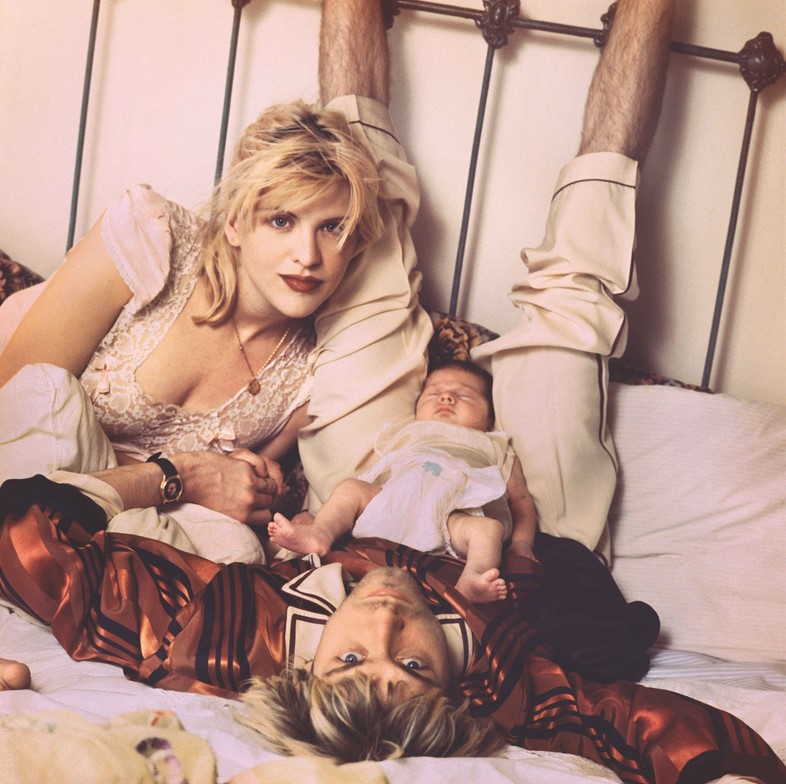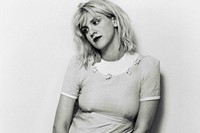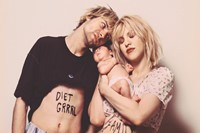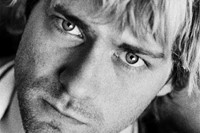“They were a loving family at home but they were rock and roll, and did exactly what they wanted,” recalls photography duo Guzman, as they unveil their never-before-seen photos of the Cobain family at home in Hollywood
On 18 August 1992, Kurt Cobain and Courtney Love welcomed a little girl, Frances Bean, into the world. In the whirlwind year prior, Nirvana had released Nevermind, catapulting the couple from underground notoriety to global superstardom. Cobain, then 25, and Love, 27, moved into a three-bedroom house ensconced in Hollywood Heights the month before Frances Bean’s birth, a far cry from the Nirvana frontman’s life just one year earlier when he’d been living out of his car.
Their rise heralded the arrival of the recently dubbed “Generation X”, whose rage, disgust and disillusionment with the status quo fuelled grunge, the rightful heir to 1970s punk. Now voting age, Gen X posed a significant threat to the Moral Majority, who were scrambling to install George HW Bush as president. With the top job poised to go to a saxophone-playing, boxer-wearing, weed non-inhaling playboy from Arkansas (Bill Clinton), they descended on Houston, Texas en masse for the 1992 Republican National Convention (RNC) that very August.
The day after Frances was born, the RNC hosted a special “Family Values” event at the RNC, headlined by pay-to-pray televangelist Pat Robertson, who dazzled the crowds with dog whistles and religious clichés. The vapid, cloying phrase quickly took root among the right, who seized every opportunity to impose Christian ideology through governance, sparking endless culture wars.
Then, on September 1, Vanity Fair published Strange Love: The Story of Kurt Cobain and Courtney Love, Lynn Hirschberg’s brutal hatchet job that painted Love as a monster who held Cobain in her clutches, with a knowing nod to the tragic fate of Sid Vicious and Nancy Spungen. Hirschberg cast Love as an opportunist, addict, artist of questionable talent and woman of moral repute. The young couple decided the time had come to fight back. They teamed up with longtime friend and collaborator Jonathan Poneman, co-founder of Sub Pop, for the December cover story of Spin magazine.
But the story was more than damage control, it was their opportunity to tell their story on their own terms. Suffering from chronic stomach pain, Cobain self-medicated with heroin and spiralled into addiction that led him to suicidal ideation, a fight that would ultimately lead him to take his life on 5 April 1994. During the summer of 1992, he had been in and out of rehab, trying to get his life sorted out. Shortly before Frances was born, they moved into their new home nestled deep in the Hollywood Hills.
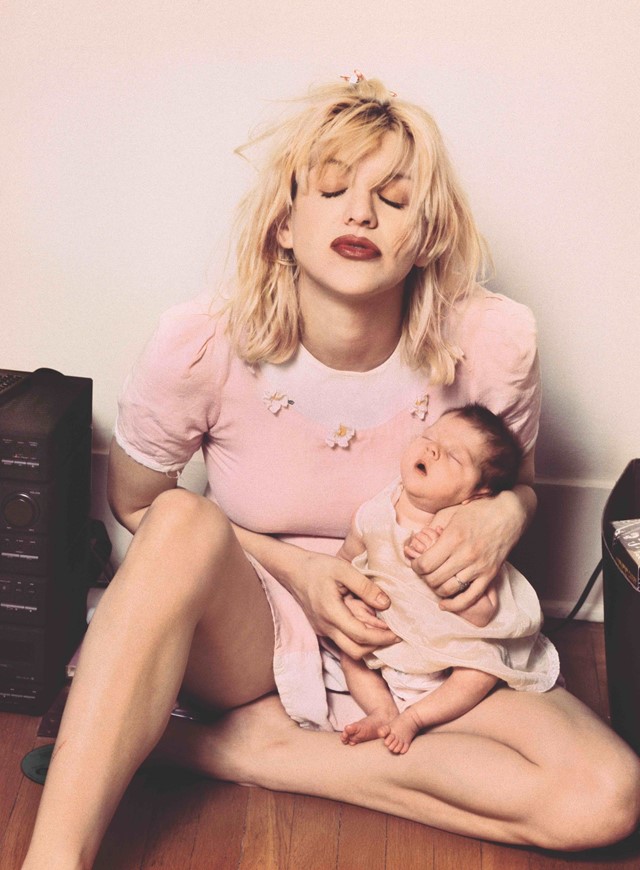
On September 23, Constance Hansen and Russell Peacock, the husband and wife photography team of Guzman, arrived at the 1921 craftsman-style house for the Spin shoot, wholly unaware of the world that lay behind those closed doors. “On our way flying out to LA, we were talking and laughing about the idea of having them do domestic chores like Courtney hanging up laundry and Kurt mowing the lawn,” Peacock says. “But all that went right out the window when we arrived.”
Opening the door, Love greeted them with offerings of coffee and fresh guava pie. Cobain was still upstairs and a five-week-old Frances was still asleep, the newborn baby’s presence creating a tender awareness of the fragility of the moment. “The baby chilled everybody out,” says Hansen. “You don’t want to wake the baby or freak them out. You want to be authentic and real.”
Three decades later, Hansen and Peacock are revisiting this fabled shoot for the first time in their new book, Family Values (powerHouse Books), an intimate chronicle of a young couple driven by passion and love that eschewed the trappings of fame and celebrity for truth and art. Through Guzman’s portraits, we see the last of a fading breed: the true rock star who spoke for outsiders, misfits and radicals who wanted nothing more than to live by their own rules.
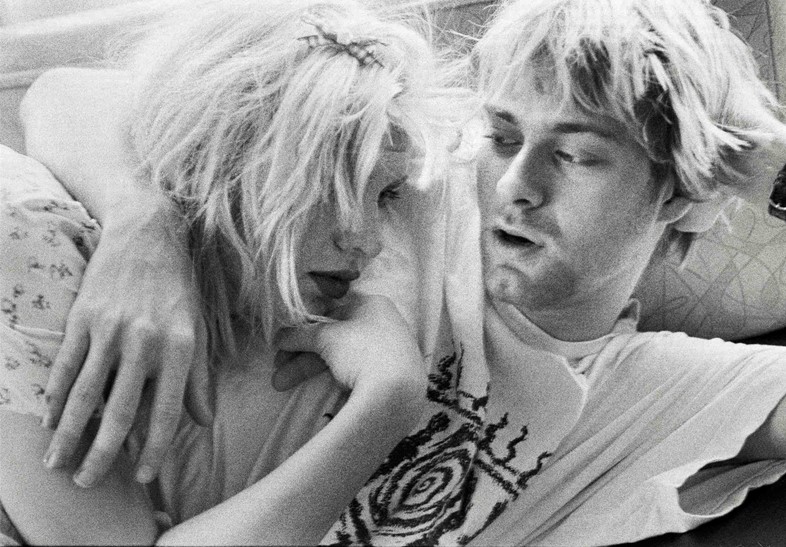
Hansen and Peacock understood the challenges of parenting without the harsh glare of the public eye. “We had a two-year-old and related to Courtney, the baby, and how freaked out they were by people coming down on them about the Vanity Fair article,” Hansen says. “Courtney was irreverent and inspirational to me. She’s very smart, quick and doesn’t have a filter. She just says what she thinks.”
As Love gave them a tour of their spare home, Hansen and Peacock realised the house was far too bare to stage scenes of suburban bliss and readily changed course, letting the story of the young family tell itself over the course of the afternoon. “We weren’t really directing, we were just hanging out for four or five hours until they had to leave,” Hansen says. “They were a loving family at home but they were rock and roll, and did exactly what they wanted.”
Like Allan Tannenbaum’s portrait of John Lennon and Yoko Ono in bed for the cover of Double Fantasy, Guzman’s photographs of Cobain, Love and Frances have become emblematic of another kind of “family values”, which Cobain wrote across Love’s belly for the pièce de résistance. Though we know their stories soon turn to tragedy, they embody the spirit of the American Dream: life, liberty, and the pursuit of happiness.
Family Values by Guzman is published by powerHouse Books, and is out now.
